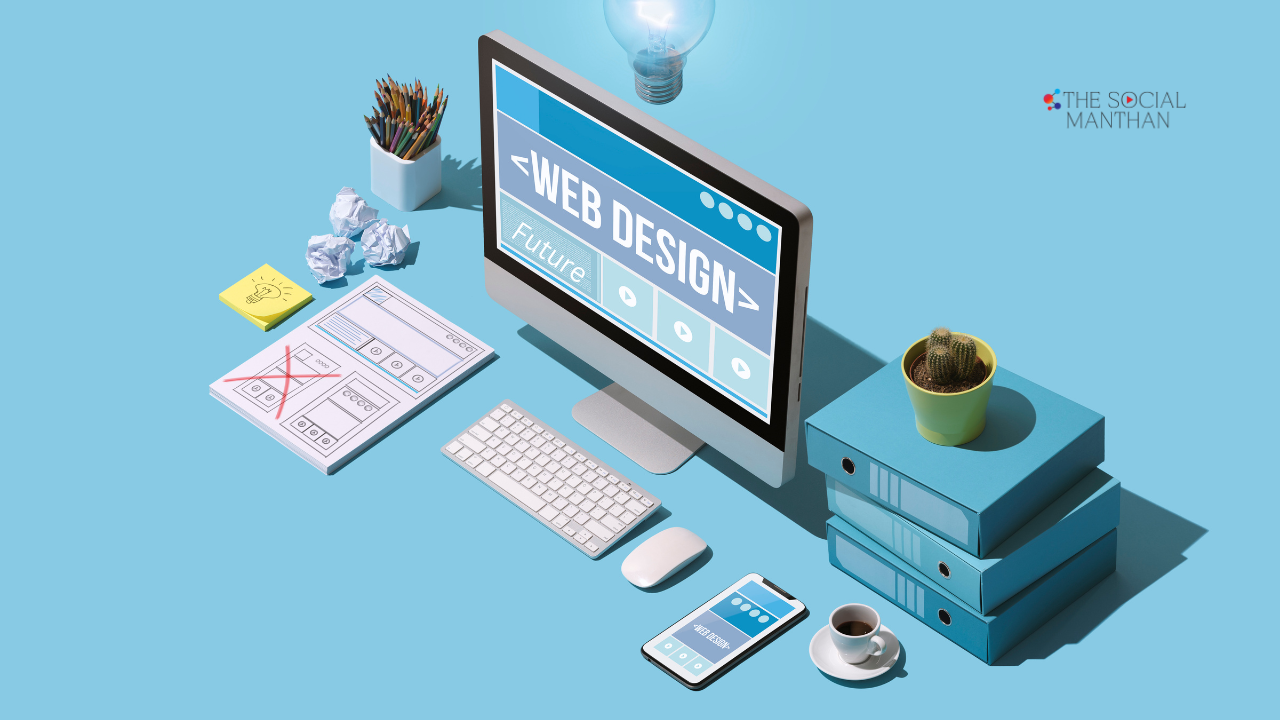This guide will equip you with important insights into the ever-evolving world of website design. As a business owner, staying ahead of design trends is crucial to ensure your online presence captures user attention and enhances customer engagement. From innovative aesthetics to enhanced usability, you’ll discover key trends that will shape the future of your website. Embracing these changes not only keeps your brand relevant but also positions you as a forward-thinking leader in your industry. Let’s research into the trends that every successful business should watch closely.
Key Takeaways:
- Mobile-First Design: Prioritizing mobile usability is crucial as more users access websites via smartphones.
- Minimalist Aesthetics: Emphasizing simplicity and functionality can lead to better user engagement and satisfaction.
- Personalization and AI: Leveraging AI-driven features can enhance user experiences by providing tailored content and recommendations.
How to Embrace Minimalism in Web Design
For businesses seeking to create impactful websites, embracing minimalism can be a game-changer. Minimalist web design focuses on simplicity and functionality, stripping away unnecessary elements to allow users to find what they need quickly and effortlessly. This approach not only enhances user experience but also aligns your brand with modern aesthetics, conveying a sense of sophistication and clarity.
Understanding Minimalism
Even as minimalism might seem straightforward, it involves a deep understanding of your audience and content. It revolves around the principle of “less is more,” emphasizing necessary features while eliminating clutter. This technique can lead to faster load times, improved navigation, and increased user engagement – crucial factors in retaining visitors and converting them into customers.
Tips for Implementing Minimalism
On your journey to minimalist design, consider these actionable tips to streamline your website:
- Focus on necessary content: Prioritize what truly matters for your audience.
- Use whitespace effectively: Allow your elements to breathe, making the design visually pleasing.
- Limit color palettes: Incorporate a maximum of two or three colors that align with your branding.
- Choose simple typography: Opt for easy-to-read fonts that maintain a clean look.
Any design choices you make should enhance the overall user experience.
In addition to those tips, you should continuously evaluate your website’s performance and user feedback to refine your minimalist approach. Keeping an eye on analytics can provide insight into user behavior, helping you identify which areas are most effective and which might benefit from additional simplification.
- Regularly update content to keep it relevant and engaging.
- Test design elements to see how users interact with them.
- A/B test different approaches to hone in on what resonates with your audience the most.
Any effort towards simplification should align with your overall business objectives.
Factors to Consider When Simplifying
Understanding the factors involved in simplifying your website design is crucial. Consider your target audience’s needs and preferences: what information are they looking for? Also, evaluate the branding elements that define your business; they should be incorporated seamlessly into the minimalist design without overwhelming users. The balance between aesthetics and functionality is key to ensuring your design serves its purpose.
- Evaluate user functionality: Ensure that simplification doesn’t compromise necessary features.
- Incorporate visual hierarchy: Use size and color to guide users through your site intuitively.
- Maintain brand identity: Stay true to your brand while adopting minimalist principles.
This approach will help you maintain a strong presence while providing a pleasant experience for your users.
Assuming you have a solid grasp of your audience’s preferences, you can confidently make decisions about which content to keep and which to eliminate. Audit your current website to identify areas of complexity and consider how each element contributes to your overall goals.
- Create a prioritized list of must-have elements for your website.
- Consider mobile responsiveness: Ensure your design works well across various devices.
- Continuously iterate on your design as you collect user feedback.
This iterative approach to minimalism fosters a more user-centric design philosophy.
Plus, always remember that minimalism is an ongoing process. As your business grows and evolves, so too should your website. Embracing the principles of minimalist web design not only simplifies the user experience but also reinforces your brand’s commitment to clarity and efficiency.
How-to Optimize for Mobile Responsiveness
There’s no denying that mobile responsiveness is necessary for modern website design. As more users access the internet from their smartphones and tablets, a website that is not optimized for mobile can lead to higher bounce rates and lost opportunities. In fact, studies show that nearly half of all web traffic comes from mobile devices. Therefore, ensuring your website delivers a seamless user experience regardless of device is not just beneficial; it’s necessary for success.
Importance of Mobile-First Design
If you want to reach and engage your target audience effectively, adopting a mobile-first design approach is crucial. This means designing your website with mobile users in mind first, then scaling up for larger screens. A mobile-first strategy helps ensure that your core content is well presented and easily accessible, leading to improved user experience and higher engagement rates.
Moreover, search engines like Google take mobile-friendliness into account when ranking websites. So, by prioritizing mobile responsiveness, you’re not only enhancing the experience for your visitors but also optimizing your site for better search engine visibility. This can drive more traffic and ultimately result in increased conversions.
Tips for Designing Responsive Websites
Now that you understand the significance, it’s time to explore effective strategies for designing responsive websites. Here are a few tips to keep in mind:
- Use a fluid grid layout that adjusts to different screen sizes.
- Implement flexible images that can scale within their containers.
- Utilize media queries to apply different styles based on device characteristics.
- Ensure that your navigation is user-friendly and accessible on all devices.
The goal is to create an adaptable website that provides a consistent experience across all devices.
Plus, consider incorporating elements such as touch-friendly buttons and larger font sizes to enhance usability on mobile devices. Here are additional tips:
- Optimize page load speeds for faster access on mobile networks.
- Regularly test your website’s performance on various devices and browsers.
- Streamline content to ensure that necessary information is readily available.
The easier your site is to navigate, the better your users’ experience will be, leading to increased engagement.
Factors Affecting Mobile Usability
Mobile usability is impacted by several factors, which can greatly influence how users interact with your site. Elements such as page load time, navigation structure, and content layout all play a significant role in the overall mobile experience. Ensuring that your website is intuitive and loads quickly on mobile devices can mean the difference between a user staying or leaving your site.
- Responsive visuals that adapt appropriately to different screen sizes.
- Avoiding excessive pop-ups that can disrupt the user experience.
- Making sure touch targets have appropriate sizes and spacing.
This attention to detail not only assists in retaining your audience but also boosts overall user satisfaction.
This means being proactive in addressing usability issues that could deter users. Testing your site’s responsiveness and mobile usability should be a continuous process, allowing you to make improvements as technology and user expectations evolve.
- Regularly gather feedback from mobile users to identify pain points.
- Utilize analytics tools to track user behavior on your site.
- Stay informed about the latest mobile design trends and technologies.
This commitment to continual improvement ensures that your website remains user-friendly and competitive in the online landscape.
How-to Incorporate Dynamic Content
Keep your website ahead of the curve by embracing dynamic content. This approach goes beyond static elements, creating an interactive experience tailored to the unique preferences and behaviors of your audience. By integrating dynamic content, you can ensure your website remains engaging and relevant, potentially increasing user satisfaction and retention.
What is Dynamic Content?
With dynamic content, your website can display personalized information in real-time based on user interactions. This includes elements like personalized greetings, product recommendations, or even local information based on the user’s geographical location. Rather than presenting the same content to every visitor, dynamic content adapts, creating a more customized and relevant experience that resonates with your audience.
Dynamic content is powered by various data sources, such as user profiles, preferences, and behavior analytics. By harnessing these resources, you can craft an interactive website that feels tailor-made for each visitor. This not only boosts engagement but also drives conversions, as users are more likely to interact with content that speaks directly to their interests.
Tips for Using Dynamic Elements Effectively
Some strategies to effectively incorporate dynamic elements into your website include:
- Utilize user data to create personalized experiences.
- Incorporate real-time updates to keep content fresh.
- Test different dynamic elements to see what resonates with your audience.
- Maintain a good balance between dynamic and static content to avoid overwhelming users.
- Set clear goals to measure the effectiveness of dynamic content.
Any effort you make to enhance user experience through dynamic elements can lead to greater engagement and loyalty from your audience.
Content types play a crucial role when leveraging dynamic elements. You can incorporate videos, infographics, and detailed product descriptions tailored to user preferences, enhancing interaction rates. Be sure to refine these elements based on user feedback and analytics to ensure they meet your audience’s expectations.
- Employ storytelling techniques to make dynamic content more engaging.
- Utilize user-generated content to enhance authenticity.
- Leverage geographic data for localized promotions or information.
- Offer personalized deals or offers based on user activity.
- Regularly update dynamic features to maintain user interest.
Any updates can reinvigorate your website’s appeal and effectiveness.
Factors Influencing Engagement with Dynamic Content
Engagement with dynamic content is influenced by various factors, including the relevancy of information presented and the user’s prior interactions with your site. Dynamic elements should not only capture attention but also deliver value by addressing users’ specific needs or questions. This relevance directly affects how likely users are to stay, explore, or revisit your site.
- Personalization based on user preferences enhances connection.
- Ease of navigation influences how users interact with dynamic elements.
- Visual appeal plays a role in drawing users’ attention.
- Loading speed is crucial for maintaining interest and engagement.
- Clear calls-to-action guide users toward desired outcomes.
Any improvement in these factors can dramatically boost user interaction and satisfaction.
Dynamic content’s success often hinges on understanding your audience. By analyzing user data, you can identify segments with differing interests and tailor your approach accordingly. Factors such as browsing history, engagement rates, and demographic data all provide insights into what content will resonate most effectively.
- Use analytics to gauge what dynamic elements are most appealing.
- Consider user feedback as a guide for content adjustments.
- Track conversion rates to evaluate the effectiveness of your dynamic content.
- A/B testing can help refine dynamic implementations.
- Stay updated with emerging trends in user behavior.
Any adaptation based on these insights can enhance the overall effectiveness of your dynamic content strategy.
How-to Enhance User Experience (UX)
Many businesses are increasingly recognizing that user experience (UX) plays a critical role in the success of their websites. A positive UX ensures that visitors find your site easy to navigate, engaging, and ultimately, worth revisiting. By placing user needs and preferences at the forefront of your design process, you build strong connections with your audience and improve your potential for conversions.
Defining User Experience for Websites
For website design, user experience encompasses every interaction a visitor has with your site. It involves elements like the layout, content accessibility, and overall aesthetic appeal. A good UX means that users can achieve their goals with minimal friction, whether that’s finding information, making a purchase, or contacting you. Ultimately, the goal is to create a seamless journey that meets or exceeds visitor expectations.
Understanding the nuances of user experience for your website can help you make informed design decisions. Incorporating feedback from real users, analyzing behavior patterns, and keeping up with UX trends ensures your site evolves with your audience’s needs. Consider conducting user surveys or usability testing to gauge how well your site serves its intended purpose.
Tips for Creating Intuitive Navigation
If you want your website to be user-friendly, the navigation must be intuitive. This means organizing your content logically and ensuring users can find what they’re looking for without frustration. Here are some key tips to ensure your navigation is as effective as possible:
- Keep menu items concise and descriptive.
- Utilize drop-down menus for subcategories, but avoid excessive nesting.
- Create a logical flow from one page to the next.
- Implement a search bar for added convenience.
Knowing these best practices can greatly enhance the ease with which users traverse your site and access important information.
Experience shows that effective navigation is only one part of the equation. It’s crucial to consider how the navigation integrates with the overall design. Aesthetic elements should complement usability—with clear visuals and engaging content that guides users effortlessly through their navigation experience. A cohesive design aesthetic can also increase trust in your brand, encouraging further exploration of your offerings.
- Ensure that clickable elements such as buttons and links are easily identifiable.
- Regularly validate your navigation structure by analyzing user engagement data.
Knowing how visitors interact with your site allows you to continually improve their navigation experience.
Factors that Impact Overall UX
The overall user experience is influenced by a variety of factors, including design consistency, loading speed, and mobile responsiveness. Each element should work harmoniously to create a cohesive experience for visitors. Consistent branding across your site can help users form a mental model, aiding in their navigation and comprehension of content.
User interaction can be further streamlined by ensuring that your site performs optimally on all devices. With an increasing number of consumers accessing the web via mobile devices, website speed and responsiveness are critical factors. Slow-loading pages discourage visitors and lead to high bounce rates, which can adversely affect your SEO rankings and user satisfaction.
- Optimize images and files for faster loading times.
- Implement responsive design strategies to accommodate various screen sizes.
Knowing these factors allows you to pinpoint specific areas needing improvement that can significantly enhance user experience on your website.
Plus, staying updated on the latest UX research and trends can provide insights on evolving user preferences and behaviors. Monitoring changes in your industry can inspire innovative design techniques and features that resonate with your audience, setting your website apart from competitors.
How to Leverage Visual Storytelling
Not every designer understands how visual storytelling can transform the user experience of a website. However, tapping into the narrative power of design can significantly enhance your online presence, providing your audience with more than just information; it gives them an experience. By weaving a story through visuals, you can engage your visitors, guide them through your content, and enhance emotional connections with your brand.
Understanding the Role of Storytelling in Design
For modern businesses, storytelling is not merely an art form—it is a strategic tool that can help convey your brand’s message and values. By utilizing design elements like images, colors, and typography, you can illustrate your brand’s journey and value proposition, making it more relatable to your audience. When you create a narrative thread throughout your website, you enable users to experience the essence of your brand rather than just passively browsing through static pages.
Moreover, storytelling in design utilizes emotional triggers that engage users in a meaningful way. When well-executed, it fosters connection and loyalty, encouraging visitors to not only stay longer but also revisit your site. You can create a path for your audience to follow through your design—one that highlights significant milestones, challenges overcome, or the benefits of your services—ultimately leading to higher conversion rates.
Tips for Effective Visual Storytelling Techniques
Storytelling in design isn’t just about throwing a few images together; it’s about crafting a cohesive narrative that resonates with your audience. Here are some tips you can employ to enhance your visual storytelling strategies:
- Identify your audience and tailor your visuals accordingly.
- Use high-quality images and graphics that evoke emotion.
- Create a visual hierarchy to guide users through your story.
- Incorporate color schemes that align with your brand message.
- Utilize white space effectively to avoid overwhelming users.
Thou shall recognize the power of visual storytelling and incorporate these techniques to create deeper connections with your audience.
Storytelling enhances the effectiveness of visual communication. When you apply storytelling techniques to your design, you can entice users and turn passive readers into engaged participants. You can utilize various formats such as videos, infographics, and animations to bring your story to life. These formats can simplify complex concepts while capturing the attention of a diverse audience.
- Consistently refresh your content to keep the narrative alive.
- Encourage user-generated content to share authentic experiences.
- Implement interactive elements to maintain user engagement.
- Leverage social media for broader narrative reach.
- Use customer testimonials to create relatable stories.
Thou shall seek all avenues to tell your story through multiple channels for maximum impact.
Factors that Affect Visual Engagement
The effectiveness of your visual storytelling is influenced by several factors that you must consider. First, attention spans are shorter than ever, especially in today’s digital era. Ensuring that your visuals are attention-grabbing right off the bat is crucial. Additionally, cultural context can greatly affect how your visuals are received, so always keep in mind your target audience’s background and preferences. This understanding allows for better alignment of your storytelling approach with your audience’s expectations.
- Be aware of how different demographics engage with visuals.
- Utilize analytics to track user interactions with visual content.
- Test various formats and styles to determine what resonates best.
- Keep content relevant to current trends and topics.
- Consider the devices your audience uses to access your site.
Knowing your audience will significantly enhance the efficacy of your visual storytelling techniques.
The engagement of users with your visuals extends beyond just aesthetics; it’s also about the functionality and usability of your design. The ease of navigating through your story, the clarity of your message, and the responsiveness of your design all contribute to how effectively your audience engages with your visuals. If users find it challenging to explore or understand what you are presenting, they are likely to disengage and leave your site altogether.
- Make sure your design is mobile-friendly and accessible.
- Implement intuitive navigation that reflects the flow of your story.
- Use consistent branding to reinforce your identity.
- Incorporate calls-to-action that align with your narrative.
- Regularly update and optimize your content for better performance.
Knowing the factors that affect visual engagement will help you craft a more compelling story that resonates with your audience.
This chapter has explored the significance of leveraging visual storytelling in your web design, highlighting its role in forging connections and enhancing user engagement. By implementing thoughtful techniques and understanding the factors that influence visual engagement, you can create an impactful digital narrative that captivates and converts your audience effectively.
How-to Utilize AI in Website Design
Once again, as technology advances, businesses are given the opportunity to harness artificial intelligence (AI) in ways that can enhance website design. AI applications in design streamline processes, improve aesthetics, and tailor user experiences, making them indispensable in the evolving digital landscape. From predictive analytics to design automation, the potential of AI in shaping your website is vast and can lead to greater engagement and satisfaction from your users.
Overview of AI Applications in Design
The integration of AI into website design can manifest through various applications. For instance, AI-driven tools can analyze user behavior to predict what design elements will resonate most with your target audience. This data can inform layout adjustments, color schemes, and other visual elements, ensuring that your website is not just visually appealing but also highly functional and user-centric. Additionally, AI can assist in automating mundane tasks such as image optimization and responsive design adjustments, freeing up your creative team to focus on innovation.
Moreover, chatbots powered by AI can enhance user interaction by providing support and guidance around the clock. This not only bolsters customer experience but also allows you to gather invaluable insights regarding user queries and preferences. The continued evolution of these tools signals that businesses should be proactive in adopting such technologies to remain competitive.
Tips for Implementing AI Tools
You should start by identifying which specific aspects of your website design can benefit from AI tools. Consider the following tips to make the most of these technologies:
- Conduct thorough research on available AI solutions tailored for web design.
- Engage with stakeholders and team members to gather input on potential AI applications.
- Pilot the chosen AI tools on a small scale to evaluate their impact before full implementation.
- Monitor performance metrics and user feedback to continuously refine your AI integrations.
After implementing AI, continuously iterate based on usage data and user feedback to ensure the tools meet your evolving needs.
In addition, you need to ensure that your team is well-versed in these AI technologies to maximize their potential. Offering training and resources can equip them with the knowledge to fully leverage the capabilities, resulting in a more cohesive design strategy that integrates AI seamlessly.
- Allocate budget for training and development related to AI tools.
- Establish regular check-ins with your team to discuss progress and challenges.
- Encourage an open-minded approach to experimenting with different AI functionalities.
- Highlight and celebrate successful AI-driven projects to boost team morale and motivation.
After investing in training, you will find that your team can unlock new levels of creativity and efficiency that will solidify your business’s position in the market.
Factors to Evaluate AI Solutions
Website designers should adopt a methodical approach in evaluating potential AI solutions. Consider these imperative factors to ascertain which tools can best serve your needs:
- Evaluate the compatibility of the AI tool with your existing website and infrastructure.
- Assess the user-friendliness of the tool, as ease of use can significantly impact your team’s productivity.
- Look for proven success stories or case studies associated with the AI solution.
- Examine the level of customer support and resources provided by the AI tool’s developers.
Perceiving and understanding these factors will help you make informed decisions about which AI integrations can bring the most value to your website.
Further, engaging with different stakeholders—such as web developers, marketing experts, and end-users—can provide a holistic view of what AI tools may best suit your website’s design. By collaborating closely with various departments, you ensure that the solutions chosen will not only function effectively but also contribute to a cohesive digital strategy.
- Seek input from team members who have hands-on experience with similar tools.
- Organize demonstrations or trials of multiple AI solutions to gauge their effectiveness in real-time.
- Request feedback from users post-implementation to measure satisfaction and usability.
- Stay current with new AI features as technology progresses.
Perceiving this multi-faceted approach to evaluating AI solutions will position your business advantageously as you navigate the complexities of modern website design.
Utilize AI to Enhance Your Website Design
Utilizing AI effectively can transform your approach to website design, making it more adaptive and user-focused. Implementing AI tools can result in unique, engaging experiences that resonate with your audience while streamlining your design processes. With the rapid evolution of AI technology, your commitment to leveraging these resources will keep your business at the forefront of trends in website design.
How-to Stay Ahead with Emerging Technologies
Your online presence is pivotal to your business success, and staying ahead with emerging technologies is crucial for your website design. As technology continues to evolve, understanding recent trends and adopting the right tools can give you a competitive edge. This chapter will explore these areas to ensure your website remains modern and relevant.
Recent Trends in Web Technologies
Trends in web technologies are shifting towards a more integrated and user-centric approach. You’re likely to notice an increase in the use of artificial intelligence (AI) for enhancing user experiences, such as chatbots providing instant customer service or AI-driven analytics offering insights into user behavior. Additionally, responsive design is becoming a necessity rather than an option, as mobile browsing continues to outpace desktop usage.
Another emerging trend is the emphasis on performance and speed. Websites that load faster and efficiently rank higher in search engine results, which directly affects business visibility. Progressive Web Apps (PWAs) and single-page applications (SPAs) are also gaining traction, allowing for smoother interactions and a more app-like experience on web pages. Staying informed about these trends will help you make informed decisions in your design process.
Tips for Adopting New Tools and Technologies
You can enhance your website’s functionality and usability by embracing new tools and technologies promptly. First, consider conducting thorough research on available tools that align with your website goals. Look for reviews or case studies showcasing how these tools have benefitted other businesses. Next, prioritize your technology investments based on your business needs and user experience enhancements.
- Participate in webinars and workshops to learn about new technologies.
- Engage with tech communities to share insights and experiences.
- Test tools through trials before fully committing.
Recognizing the importance of continual evaluation will help in making the right decisions for your web development strategy.
Adopting new tools and technologies can be a challenging process, but breaking it down into manageable steps can ease the transition. Develop a strategy to integrate new tools into your existing workflows without disrupting your current operations. Invest time in training your team on how to maximize the benefits of these new tools, ensuring that everyone is on the same page.
- Assess your budget for new technologies and tools.
- Involve your team in the selection process to increase buy-in.
- Monitor the impact of new tools on your website performance closely.
Recognizing the value of collaboration and feedback during this process can foster a culture of innovation within your organization.
Factors Driving Technological Change
Emerging technologies in web design are shaped by several factors driving change. User demands continue to evolve, with expectations for seamless and interactive experiences pushing businesses to innovate regularly. Increasing reliance on data analytics also drives technological change, allowing you to understand user patterns and preferences better, thus enabling tailored experiences.
- The rise of mobile-first design reflects shifting user habits.
- Global competition demands that businesses remain agile and adopt cutting-edge solutions.
- Societal trends emphasize accessibility and inclusivity in web experiences.
Perceiving these factors as opportunities rather than challenges will allow you to better adapt and flourish in a rapidly changing digital landscape.
Technologies are constantly evolving, and their integration is vital for staying relevant. Being aware of how societal trends influence web design can help you align your strategies accordingly. Moreover, trends such as sustainability and ethical practices are becoming increasingly significant, encouraging businesses to consider their impact on society. Emphasizing these values can boost your brand image and foster loyalty among customers.
- Investigate how new technologies can support sustainability initiatives.
- Stay informed about industry changes and technological advancements.
- Evaluate user feedback to refine technology choices continually.
Perceiving these societal and technological developments will bolster your website’s effectiveness and relevance in a competitive digital marketplace.
Summing up
Summing up, the future of website design is not just about aesthetics; it’s a comprehensive integration of functionality, user expectation, and technological innovation. As you navigate through these evolving trends, it becomes crucial to assess how emerging technologies such as artificial intelligence, voice search optimization, and immersive experiences like AR and VR can enhance your website’s effectiveness. By staying informed on these trends and adapting your strategies accordingly, you can create a website that not only meets modern standards but also offers a unique user experience that elicits engagement and loyalty.
Moreover, prioritizing mobile-first designs, accessibility, and sustainability in your web design approach will resonate with your audience and ensure compliance with evolving digital regulations. As you implement these elements, remember that the success of your website lies in its ability to adapt and respond to user needs. Embracing these design trends will not only position your business for success but also help you stay ahead in the competitive digital landscape. Welcome to the future of website design—it’s time to make it work for you.
FAQ
Q: What are the key website design trends for businesses to watch in the near future?
A: As we look to the future of website design, several key trends emerge that businesses should be mindful of. These include:
1. **Mobile-First Design**: With an increasing number of users accessing the web via mobile devices, adopting a mobile-first approach will ensure websites are user-friendly and visually appealing on smaller screens.
2. **Dark Mode Design**: Many users prefer dark mode for its sleek appearance and reduced eye strain. Incorporating this feature can enhance user experience and attract a wider audience.
3. **Minimalism and Maximalism**: While minimalistic designs focus on simplicity and functionality, maximalist designs embrace bold colors and intricate details. Businesses should choose the style that aligns with their branding and user preferences.
4. **Interactive and Dynamic Content**: Websites that offer interactive features such as animations, chatbots, and immersive scrolling will keep users engaged and interested in the content.
5. **Sustainability and Eco-friendly Design**: As more users become conscious of environmental issues, adopting eco-friendly practices in design and hosting can resonate well with eco-conscious consumers.
Q: How can businesses leverage emerging technologies in their website design strategy?
A: Emerging technologies provide numerous opportunities for businesses to enhance their website design. Here are some ways to leverage these technologies:
1. **Artificial Intelligence (AI)**: Implementing AI-based features such as chatbots for customer service or AI-driven personalization can improve user engagement and satisfaction.
2. **Voice User Interface (VUI)**: As voice search becomes increasingly popular, designing websites with VUI in mind allows users to interact using voice commands, making navigation more accessible.
3. **Augmented Reality (AR)**: Businesses, especially in retail, can use AR technology to allow customers to visualize products in their own space before making a purchase, enhancing the shopping experience.
4. **Accelerated Mobile Pages (AMP)**: AMP technology helps create mobile-optimized content to load faster, improving user experience and potentially boosting search rankings.
Q: Why is it vital for businesses to stay updated with website design trends?
A: Staying updated with website design trends is crucial for businesses for several reasons:
1. **User Expectations**: As technology evolves, so do user expectations. Modern users anticipate websites to be fast, responsive, and aesthetically pleasing. Failing to meet these expectations can lead to high bounce rates and lost customers.
2. **Competitive Advantage**: Keeping up with design trends allows businesses to stand out in a competitive market. A contemporary and innovative website can attract more visitors and convert them into loyal customers.
3. **Branding and Credibility**: A modern and well-designed website enhances a brand’s credibility and professionalism. This can significantly impact customer trust and the overall perception of the brand.
4. **SEO Benefits**: Staying current with design trends often aligns with best practices in SEO, helping businesses improve their search engine rankings and attract more organic traffic.









